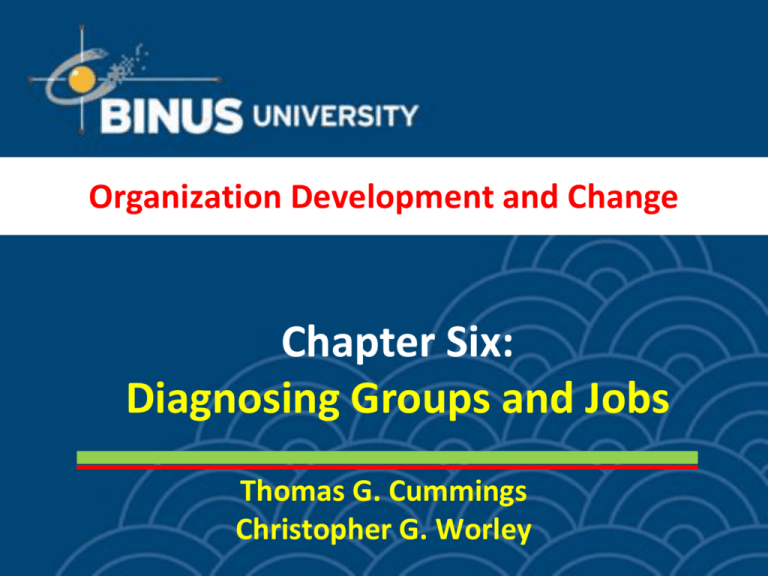Group-Level Design Components Goal Clarity
advertisement

Organization Development and Change Chapter Six: Diagnosing Groups and Jobs Thomas G. Cummings Christopher G. Worley Learning Objectives for Chapter Six To clarify the concepts of group and job level diagnosis To define diagnosis and to explain how the diagnostic process discovers the underlying causes of problems at the group and job level of analysis To present an open systems diagnostic model for group and job levels HS 6-2 Group-Level Diagnostic Model Inputs Design Components Outputs Goal Clarity Organization Design Task Structure Group Composition Group Functioning Group Effectiveness Performance Norms HS 6-3 Group-Level Design Components Goal Clarity extent to which group understands its objectives Task Structure the way the group’s work is designed Team Functioning the quality of group dynamics among members Group Composition the characteristics of group members Performance Norms the unwritten rules that govern behavior HS 6-4 Group-Level Outputs Product or Service Quality Productivity e.g., cost/member, number of decisions Team Cohesiveness e.g., commitment to group and organization Work Satisfaction HS 6-5 Individual-Level Diagnostic Model Inputs Design Components Skill Variety Organization Design Group Design Personal Traits Outputs Task Identity Task Significance Autonomy Individual Effectiveness Feedback about Results HS 6-6 Individual-Level Design Components Skill Variety The range of activities and abilities required for task completion Task Identity The ability to see a “whole” piece of work Task Significance The impact of work on others Autonomy The amount of freedom and discretion Feedback about Results Knowledge of task performance outcomes HS 6-7 Individual-Level Outputs Performance e.g., cost/unit, service/product quality Absenteeism Job Satisfaction e.g., internal motivation Personal Development e.g., growth in skills, knowledge, and self HS 6-8 2-9








